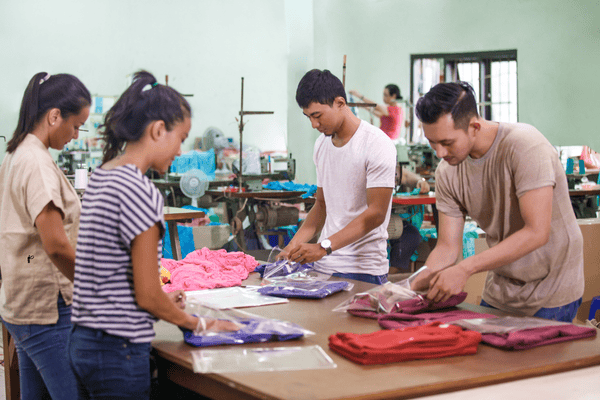In 2025, a large-scale garment workers' strike broke out in Bangladesh, demanding a substantial increase in the minimum wage. The strike caused nearly 70% of factories in the country to stop production, a large number of orders were canceled, and the global clothing industry chain faced a reshaping. India became the biggest beneficiary of this crisis by taking over the transferred orders.
Event Review
On January 15, 2025, garment workers in Dhaka, the capital of Bangladesh, demonstrated, demanding an increase in the minimum wage to $180 per month, 2.3 times the current standard. After the breakdown of labor-management negotiations, the National Garment Manufacturers Association announced an indefinite strike. As of February 10, the strike affected 68% of factories across the country. International brands such as H&M and Primark have canceled orders totaling more than $1.2 billion, and Chittagong has a backlog of more than 85,000 TEU containers, with logistics delays of up to 21 days.
Faced with the grim situation, the Bangladeshi government initiated an emergency mediation procedure, but the union refused to compromise. The International Labor Organization warned that if the deadlock continues until March, Bangladesh may lose its "EU Generalized System of Preferences" trade status, which will deal a huge blow to its clothing exports.
India's Opportunities: Orders Blowout, Capacity Expansion
As an important textile producer in the world, India has become the biggest beneficiary of this crisis. In the past 30 days, India's textile industry has seen a surge in orders, with the operating rates of factories in Tamil Nadu and Gujarat exceeding 95%. The total amount of orders transferred from European and American brands is estimated to reach US$4.6 billion, and the industry has urgently recruited 150,000 skilled workers.

Government Policy Support
To seize this opportunity, the Indian government has actively responded and introduced a series of policy measures:
Trade facilitation: The establishment of an "emergency order" customs green channel has come into effect.
Capacity expansion: Release 3,200 hectares of reserve land for state-owned textile parks, and bid on February 20.
Financial support: Provide exporters with a special credit with an annual interest rate of 4%, which will be implemented on March 1.
Development Trend
Short-term fluctuations:
Global mid-range clothing prices are expected to rise by 5-8%, and the launch of new spring and summer products in 2025 will generally be delayed by 2-3 weeks. Panic hoarding has occurred on cross-border e-commerce platforms.
Long-term trend:
Industry diversification is accelerating: It has become the new normal for brands to require suppliers to provide "multinational alternative production bases".
Technology upgrade window: India takes advantage of the opportunity to promote the import substitution strategy of automation equipment.
Labor standards reshape: International procurement contracts add a "social stability risk assessment" clause.
Risk warning: challenges and responses.
Challenges of India's Textile Industry:
- Skilled worker shortage and overcapacity coexist: vocational training needs to be strengthened and the capacity structure needs to be optimized.
- The Association of Southeast Asian Nations may launch a textile industry coordination mechanism: India needs to strengthen cooperation with neighboring countries to jointly cope with competition.
- Global fiber raw material prices jumped 12% in a single week, and cost transmission pressure was highlighted: it is necessary to strengthen the supply of raw materials and control cost increases.
Conclusion
The turmoil in the global clothing industry chain caused by the Bangladesh strike has brought development opportunities to the Indian textile industry. India should seize the opportunity, actively respond to challenges, achieve industrial upgrading, and consolidate its position in the global textile industry.




